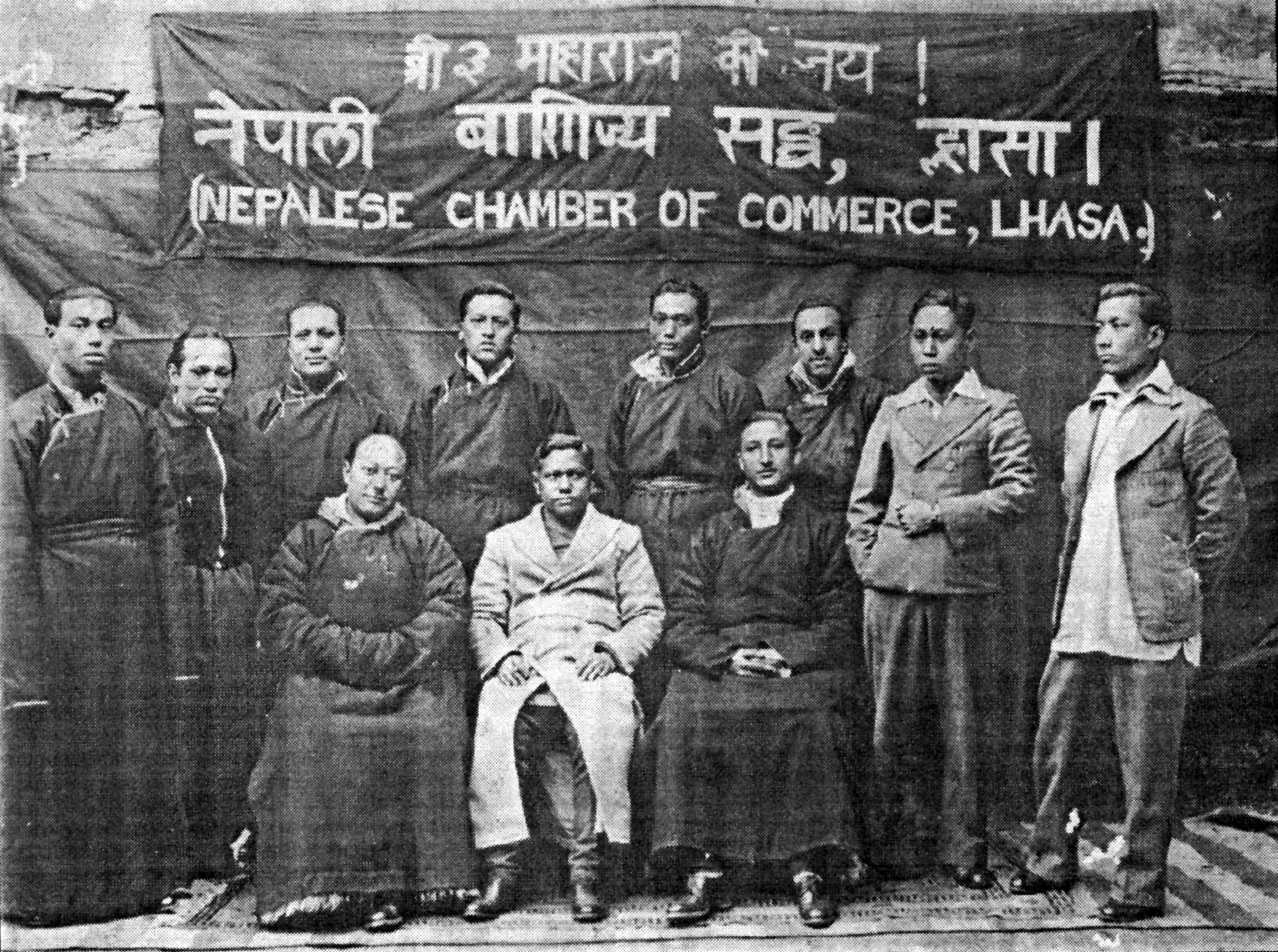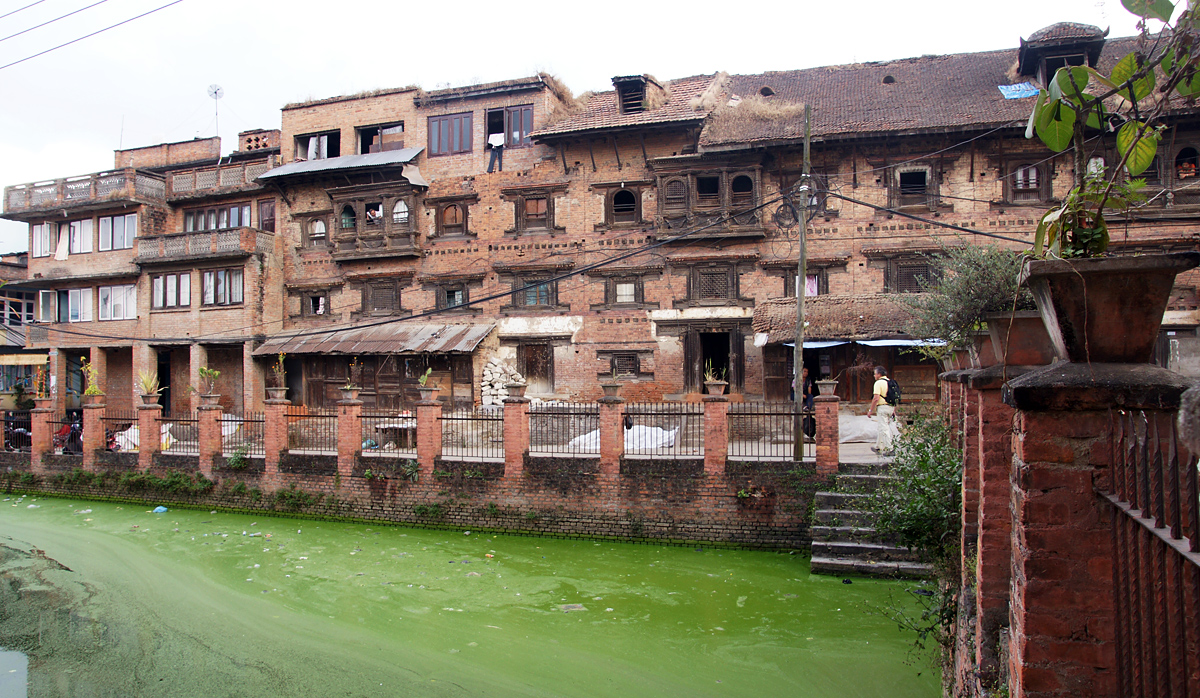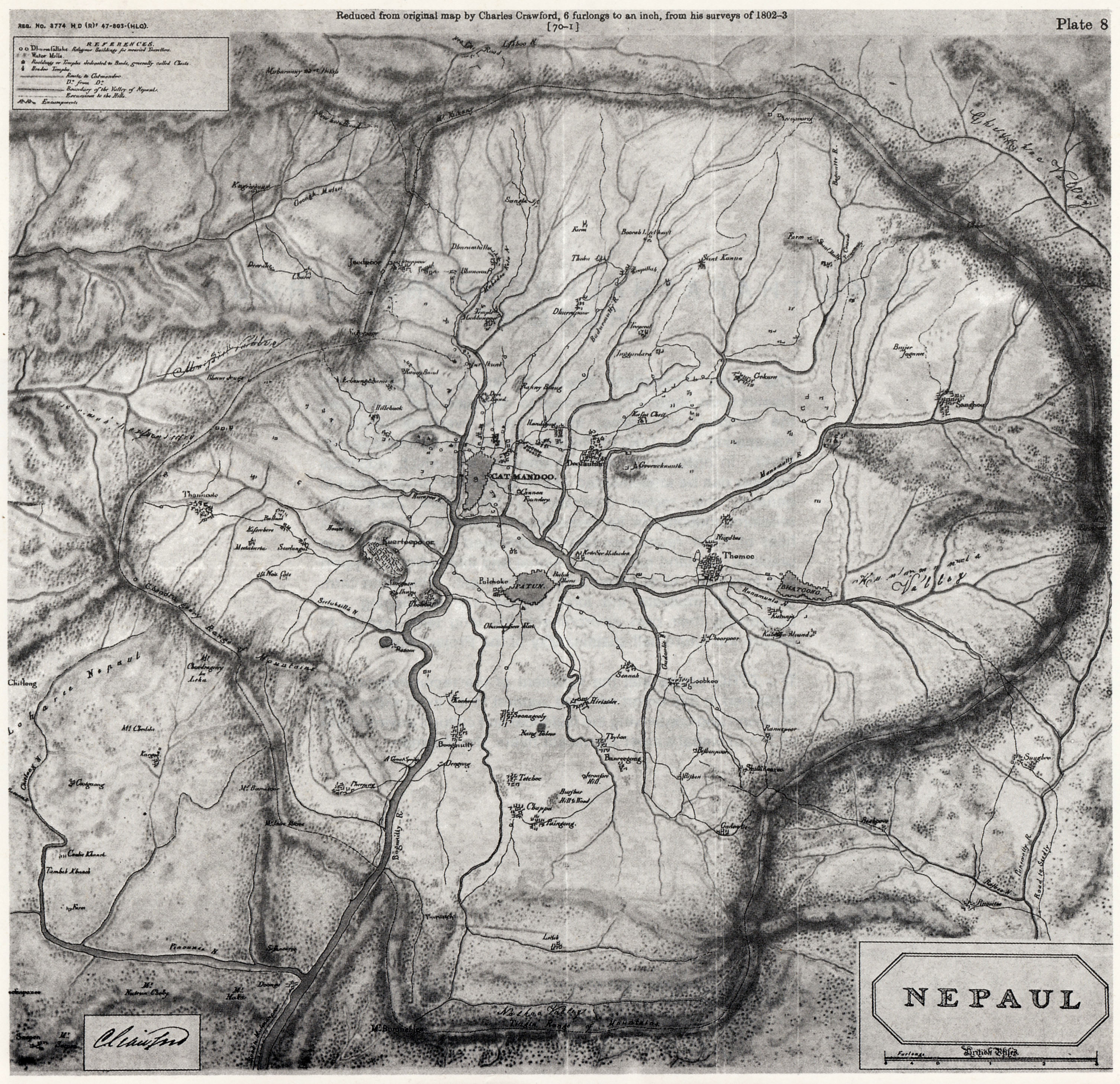|
Kapali (Newar Caste)
Kapali is one of the Caste of Newar community in Nepal. It is an ancient caste of Nepal. Kapali caste are found in various parts of Nepal. Newar Kapalis predominantly used to possess high tantric power. The Newar people are the historical inhabitants of the Kathmandu Valley and its surrounding areas in Nepal. Description Generally, Kapalis of Shiva Gotra are widely found in Nepal. They follow mixed Hinduism as well as Buddhism. They mostly follow Hinduism and consider Shiva as the supreme body whereas Guru Gorakhnath is considered as the supreme deity for their welfare. Kapali are taken as kid of Lord Shiva. Although, in different time period, Kapali have developed their own Tantric system. Kapali plays Myali ( a musical instrument like Flute made up of animal bone) which has the immense power to call God in the stone idol. The musical instrument is also capable to make the rainfall from the sky as per Sadhak's power. Kapalis had served as nurse, doctor or delivery person during th ... [...More Info...] [...Related Items...] OR: [Wikipedia] [Google] [Baidu] |
Caste
Caste is a form of social stratification characterised by endogamy, hereditary transmission of a style of life which often includes an occupation, ritual status in a hierarchy, and customary social interaction and exclusion based on cultural notions of purity and pollution. * Quote: "caste ort., casta=basket ranked groups based on heredity within rigid systems of social stratification, especially those that constitute Hindu India. Some scholars, in fact, deny that true caste systems are found outside India. The caste is a closed group whose members are severely restricted in their choice of occupation and degree of social participation. Marriage outside the caste is prohibited. Social status is determined by the caste of one's birth and may only rarely be transcended." * Quote: "caste, any of the ranked, hereditary, endogamous social groups, often linked with occupation, that together constitute traditional societies in South Asia, particularly among Hindus in India. Althoug ... [...More Info...] [...Related Items...] OR: [Wikipedia] [Google] [Baidu] |
Newa People
Newar (; new, नेवार, endonym: Newa; new, नेवा, Pracalit script:) or Nepami, are the historical inhabitants of the Kathmandu Valley and its surrounding areas in Nepal and the creators of its historic heritage and civilisation. Page 15. Newars form a linguistic and cultural community of primarily Indo-Aryan and Tibeto-Burman ethnicities following Hinduism and Buddhism with Nepal Bhasa as their common language. Newars have developed a division of labour and a sophisticated urban civilisation not seen elsewhere in the Himalayan foothills. Newars have continued their age-old traditions and practices and pride themselves as the true custodians of the religion, culture and civilisation of Nepal. Newars are known for their contributions to culture, art and literature, trade, agriculture and cuisine. Today, they consistently rank as the most economically and socially advanced community of Nepal, according to the annual Human Development Index published by UNDP. Nepal ... [...More Info...] [...Related Items...] OR: [Wikipedia] [Google] [Baidu] |
Nepal
Nepal (; ne, नेपाल ), formerly the Federal Democratic Republic of Nepal ( ne, सङ्घीय लोकतान्त्रिक गणतन्त्र नेपाल ), is a landlocked country in South Asia. It is mainly situated in the Himalayas, but also includes parts of the Indo-Gangetic Plain, bordering the Tibet Autonomous Region of China to the north, and India in the south, east, and west, while it is narrowly separated from Bangladesh by the Siliguri Corridor, and from Bhutan by the Indian state of Sikkim. Nepal has a diverse geography, including fertile plains, subalpine forested hills, and eight of the world's ten tallest mountains, including Mount Everest, the highest point on Earth. Nepal is a multi-ethnic, multi-lingual, multi-religious and multi-cultural state, with Nepali as the official language. Kathmandu is the nation's capital and the largest city. The name "Nepal" is first recorded in texts from the Vedic period of the India ... [...More Info...] [...Related Items...] OR: [Wikipedia] [Google] [Baidu] |
Newar People
Newar (; new, नेवार, endonym: Newa; new, नेवा, Pracalit script:) or Nepami, are the historical inhabitants of the Kathmandu Valley and its surrounding areas in Nepal and the creators of its historic heritage and civilisation. Page 15. Newars form a linguistic and cultural community of primarily Indo-Aryan and Tibeto-Burman ethnicities following Hinduism and Buddhism with Nepal Bhasa as their common language. Newars have developed a division of labour and a sophisticated urban civilisation not seen elsewhere in the Himalayan foothills. Newars have continued their age-old traditions and practices and pride themselves as the true custodians of the religion, culture and civilisation of Nepal. Newars are known for their contributions to culture, art and literature, trade, agriculture and cuisine. Today, they consistently rank as the most economically and socially advanced community of Nepal, according to the annual Human Development Index published by UNDP. Nepal ... [...More Info...] [...Related Items...] OR: [Wikipedia] [Google] [Baidu] |
Kathmandu Valley
The Kathmandu Valley ( ne, काठमाडौं उपत्यका; also known as the Nepal Valley or Nepa Valley ( ne, नेपाः उपत्यका, Nepal Bhasa: 𑐣𑐾𑐥𑐵𑑅 𑐐𑐵𑑅, नेपाः गाः)), is a bowl-shaped valley located in the Himalayan mountains in Nepal. It lies at the crossroads of ancient civilizations of the Indian subcontinent and the broader Asian continent, and has at least 130 important monuments, including several pilgrimage sites for Hindus and Buddhists. There are seven World Heritage Sites within the valley. The Kathmandu Valley is the most developed and the largest urban agglomeration in Nepal with about 5 million population. The urban agglomeration of Kathmandu Valley includes the cities of Kathmandu, Lalitpur, Budhanilkantha, Tarakeshwar, Gokarneshwar, Suryabinayak, Tokha, Kirtipur, Madhyapur Thimi, Bhaktapur, etc. The majority of offices and headquarters are located in the valley, making it the economic h ... [...More Info...] [...Related Items...] OR: [Wikipedia] [Google] [Baidu] |
Malla (Nepal)
The Malla dynasty ( ne, मल्ल वंश:) was the ruling dynasty of the Kathmandu Valley in Nepal from 1201 to 1779. They were a Raghuvanshi dynasty who were seen as the descendants of the Licchavi dynasty. Later Malla kings also traced one section of their lineage from Nanyadeva, the founder of the Karnat dynasty of Mithila. The term ''malla'' means wrestler in Sanskrit. The first use of the word ''malla'' in the Kathmandu Valley begins from 1201. The Malla period was a golden one that stretched over 600 years, as they presided over and flourished the Newar civilization of Nepal Mandala which developed as one of the most sophisticated urban civilisation in the Himalayan foothills and a key destination in the India-Tibet trade route. Origin The Malla kings claimed descent from the Karnat dynasty of Mithila and often stylised themselves as ''Karnātvamși'', '' Raghuvamși'' or '' Suryavamși.'' Being originally Maithil themselves, the Mallas were noted for their ... [...More Info...] [...Related Items...] OR: [Wikipedia] [Google] [Baidu] |
Patan, Nepal
Lalitpur Metropolitan City, historically Patan ( sa, पाटन ''Pāṭana'', Nepal bhasa : '' Yela'', ), is the fourth most populous city of Nepal after Kathmandu, Pokhara and Bharatpur, and it is located in the south-central part of Kathmandu Valley, a new metropolitan city of Nepal. Lalitpur is also known as Manigal. It is best known for its rich cultural heritage, particularly its tradition of arts and crafts. It is city renowned for its festival and feast, fine ancient art, and the making of metallic, wood and stone carved statues. At the time of the 2011 Nepal census it had a population of 226,728 in 54,748 individual households. The city received extensive damage from an earthquake on 25 April 2015. Geography Lalitpur is on the elevated tract of land in Kathmandu Valley on the south side of the Bagmati River, which separates it from the city of Kathmandu on the northern and western side. The Karmanasa Khola acts as the boundary on the eastern side. It was develope ... [...More Info...] [...Related Items...] OR: [Wikipedia] [Google] [Baidu] |
Bhaktapur
, motto = ne, पुर्खले सिर्जेको सम्पत्ती, हाम्रो कला र संस्कृति , lit=Creation of our ancestors, our heritage and culture , image_map = , mapsize = 300 , map_caption = , pushpin_map = Nepal Bagmati Province#Nepal , pushpin_label_position = bottom , pushpin_mapsize = 300 , pushpin_map_caption = Location in Bagmati Province, Nepal , coordinates = , subdivision_type = Country , subdivision_name = Nepal , subdivision_type1 = Province , subdivision_type2 = District , subdivision_name1 = Bagmati Province , subdivision_name2 = Bhaktapur , established_title = Settled , established_date = First settled since antiquity, incorporated as a city in the 12th century by Ananda Deva , local government_type = , leader_title ... [...More Info...] [...Related Items...] OR: [Wikipedia] [Google] [Baidu] |
Kirtipur
Kirtipur (Nepal Bhasa: किपू ''Kipoo'') is a Municipality and an ancient city of Nepal. The Newars are the natives of Kipoo (Kirtipur) that is believed to be derived from Kirati King Yalamber. It is located in the Kathmandu Valley 5 km south-west of the city of Kathmandu. It is one of the five municipalities in the valley, the others being Kathmandu, Lalitpur, Bhaktapur and Madhyapur Thimi. It is one of the most famous and religious places to visit. Many people visit this place not only for its natural environment but also to visit temples. The city was listed as a UNESCO tentative site in 2008. Etymology The name Kirtipur comes from the Sanskrit terms ''Kirti'' (glory) and ''pur'' (city) as well as Kirat Kingdom of Yalamber's dynasty. The colloquial term used for the city is Kipoo . Demographics Originally a Newar foundation, Kirtipur is still a center of Newar culture. It has been merged with surrounding villages to form the municipality of Kirtipur with a populatio ... [...More Info...] [...Related Items...] OR: [Wikipedia] [Google] [Baidu] |
Culture Of Nepal
The culture of Nepal encompasses the various cultures belonging to the 125 distinct ethnic groups present in Nepal. The culture of Nepal is expressed through music and dance; art and craft; folklore; languages and literature; philosophy and religion; festivals and celebration; foods and drinks. Dance and music Legends state that dances in this country originated in the abode of Lord Shiva — the Himalayas, where he performed the tandava dance. This indicates that dance traditions of Nepal are very ancient and unique. With altitudes and ethnicity, the dances of Nepal slightly change in style as well as in the costumes. The Dishka, a dance performed at weddings, includes intricate footwork and arm movements. Accompanying music and musical instruments change in tune with the themes, which revolve around topics like harvesting of crops, marriage rites, war stories, a lonely girl's yearning for her love, and several other themes and stories from everyday life in the villages. The ... [...More Info...] [...Related Items...] OR: [Wikipedia] [Google] [Baidu] |
Newar Caste System
Newar caste system is the system by which Newārs, the historical inhabitants of Kathmandu Valley, are divided into groups on the basis of Vedic varna model and divided according to their hereditary occupations. First introduced at the time of the Licchavis (A.D. 300 – c. 879), the Newar caste system assumed its present shape during the medieval Malla period (A.D. 1201–1769). The Newar caste structure resembles more closely to North India and Madheshis than that of the Khas 'Parbatiyas' in that all four Varna ( Brahmin, Kshatriya, Vaishya and Shudra) and untouchables are represented. The social structure of Newars is unique as it is the last remaining example of a pre-Islamic North Indic civilisation in which Buddhist elements enjoy equal status with the Brahmanic elements. History of Assimilation According to various historical sources, even though the presence of ''varna'' and caste had been a known element in the social structure of the Kathmandu Valley since t ... [...More Info...] [...Related Items...] OR: [Wikipedia] [Google] [Baidu] |
Newar
Newar (; new, नेवार, endonym: Newa; new, नेवा, Pracalit script:) or Nepami, are the historical inhabitants of the Kathmandu Valley and its surrounding areas in Nepal and the creators of its historic heritage and civilisation. Page 15. Newars form a linguistic and cultural community of primarily Indo-Aryan and Tibeto-Burman ethnicities following Hinduism and Buddhism with Nepal Bhasa as their common language. Newars have developed a division of labour and a sophisticated urban civilisation not seen elsewhere in the Himalayan foothills. Newars have continued their age-old traditions and practices and pride themselves as the true custodians of the religion, culture and civilisation of Nepal. Newars are known for their contributions to culture, art and literature, trade, agriculture and cuisine. Today, they consistently rank as the most economically and socially advanced community of Nepal, according to the annual Human Development Index published by UNDP. Nep ... [...More Info...] [...Related Items...] OR: [Wikipedia] [Google] [Baidu] |







